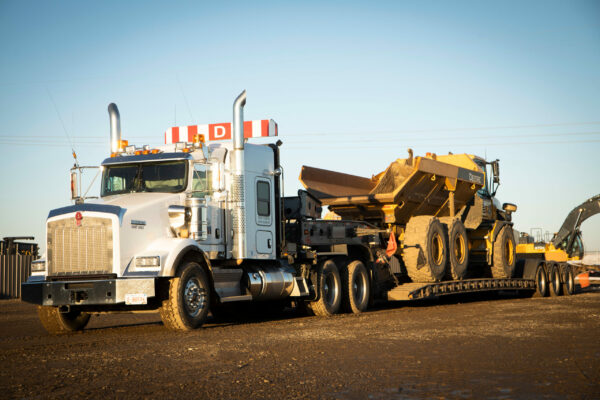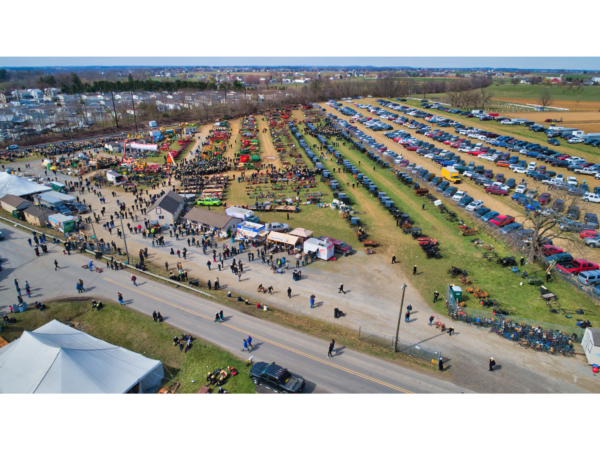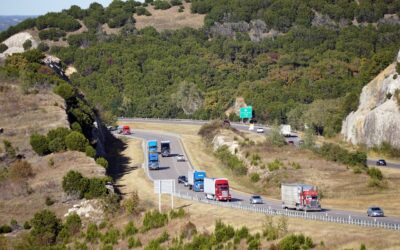What Is Considered an Oversize Load in Western Canada?
Key Points In This Article:
- What is considered an oversize load?
- Reasons why there are road restrictions for oversize loads:
- Protect road infrastructure
- Ensure public safety
- Maintain convenience on public roadways
- Regulate safety measures for truck drivers
- Rules and Regulations in Western Canada
- British Columbia
- Alberta
- Saskatchewan
- Manitoba
- Exemptions for hauling farm equipment
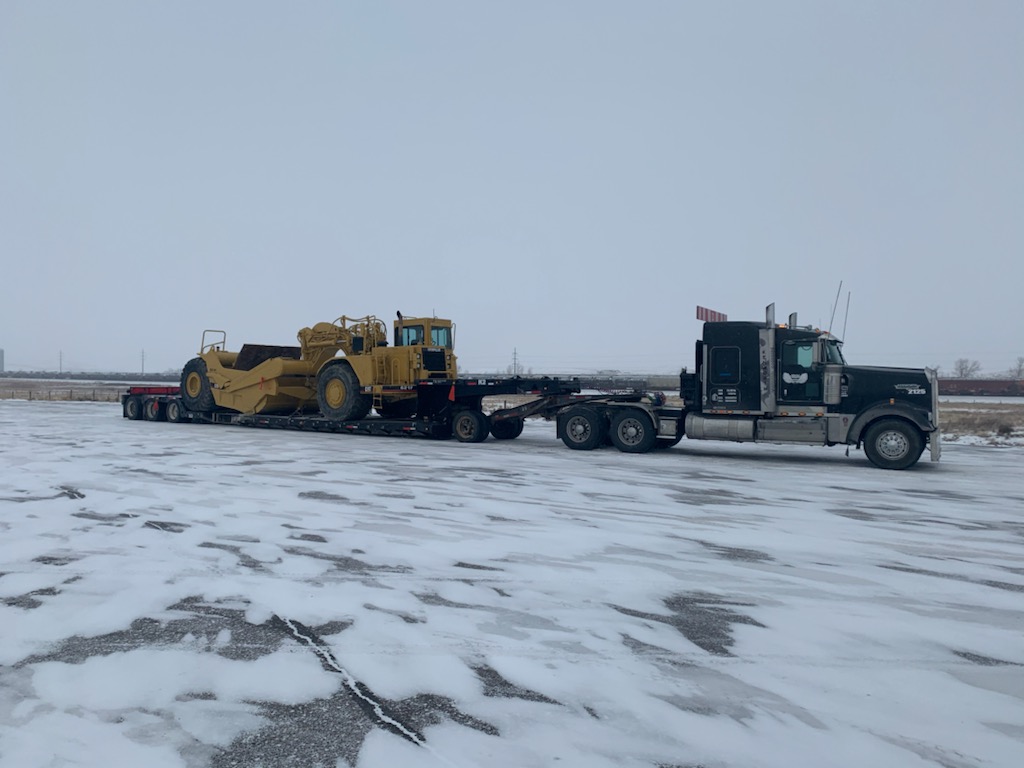
The Varied Roads of Western Canada
If you’ve ever driven from Winnipeg, Manitoba, to Abbotsford, British Columbia, then you know first-hand the incredible variations in the landscape you’ll encounter. From wide open prairies to gently sloping river valleys to the rugged passes through the Rockies and Coastal mountain ranges, Western Canada boasts some spectacular views for travellers on the open road.
While most people who hear the term “Western Canada” imagine either the glacial lakes of Banff or the flat prairie, there are many variations between the two extremes. There is also a series of primary and secondary highway networks that facilitate the movement of goods across these provinces for commercial, industrial, and personal shipping purposes.
Even though there are many similarities between the four provinces that make up Western Canada (British Columbia, Alberta, Saskatchewan, and Manitoba), the rules of the road vary based on landscape, climate, and infrastructure. In this article, we’ll explore the laws and permitting requirements of heavy haul shipping in Western Canada and how the regulations differ from province to province, mainly for oversized loads.
Why Oversized Load Regulations Vary from Province to Province
Canada, similar to the United States, is a vast country in terms of land mass. Western Canada alone includes several types of terrain, landforms, and climates. For this reason, varying regulations and permits are necessary to accommodate the infrastructure and safety hazards in each area. However, there are also a series of factors that contribute to the rationale behind road rules, including:
- Protecting and preserving the road infrastructure,
- Ensuring public safety on the roads,
- Facilitating convenience for users of public roadways,
- Regulating the safety of drivers of heavy hauls and oversized loads.
Let’s dig a little deeper into what this means for each region.
Road Infrastructure
If you’re not in road construction or a heavy haul driver, you might not think very often about the capacity of roadways and highways. An asphalt road has limitations for weight that will vary in different seasons. Winters that bring deep freeze temperatures make the ground stronger, allowing heavier weights to travel the roads. Increasingly warmer weather, especially in the summertime, reduces the amount of weight that can travel on most routes. Preserving the roadways and reducing wear and tear is the primary reason why weight restrictions are placed on heavy loads.
While a trailer could technically pull a certain-sized load, the regulations may prohibit the haul due to the damage it will inflict on the infrastructure. These rules are the reason why our drivers will use additional axles to increase the weight distribution of a heavy load. Or, in cases where it is possible to dismantle a piece of heavy machinery, such as removing a bucket, shovel, or arm, our drivers will use multiple trucks. Drivers may also divide a load when various attachments and parts are involved in order to remain within the weight restrictions.
Preserving the roadways and reducing wear and tear is the primary reason why weight restrictions are placed on heavy loads.
Protecting Public Safety
In addition to convenience, public safety is essential to maintain while transporting an oversized load. Again, each province will have slightly different standards to accommodate the infrastructure in place and the terrain. Transporting a wide load through the prairies is a different experience than traversing a two-lane highway through a mountain pass. It’s also essential to notify surrounding traffic that a wide load is travelling the road so they can make safe decisions for passing oversized loads, especially at night.
Each province will have precise requirements for different dimensions. There is typically a minimum requirement of using flags and lights to indicate a wide load to oncoming traffic. At the next size range, additional signage and lights are typically required. Then, the wider the load gets, the more assistance is needed, such as pilot cars, trail cars, and sometimes even a scout car. Further along in this article, we’ll highlight the difference in restrictions for each province.
Each province will have slightly different standards to accommodate the infrastructure in place and the terrain. Transporting a wide load through the prairies is a different experience than traversing a two-lane highway through a mountain pass.
Facilitating Convenience
The last thing that a family of three kids wants to encounter on a Friday afternoon on their way to the lake for the long weekend is a traffic jam due to an oversized load on the highway. The reverse of that situation is that no driver wants to sit for unnecessary hours in holiday traffic with a wide load. Sitting in traffic is counter-productive if it can be avoided. This scenario highlights the convenience factor and the reason why some provinces place restrictions on days and times when drivers can haul an oversized load, especially near urban areas.
The rules vary in strictness, usually prohibiting transport during certain hours of the day, on holidays, or Sundays, depending on each province. As a customer, this may sound disappointing, especially if you want your equipment sooner than later, but in reality, it is better for everyone involved. Wasted time sitting in a traffic jam is not beneficial to a shipper or a driver. Drivers with a regular route will also know the optimal times for transport and may recommend a specific pick-up or drop-off time based on traffic flow at certain points of the day or days of the week.
Regulate Safety Measures
Public safety is always a priority with rules of the road, but so is the safety of the driver. Limitations on the size of loads a truck can legally pull help ensure a standard of safety for heavy haul truckers. The larger and heavier a load is, the more skill is required to haul it. In regions where the weather can become extreme or the route is challenging to navigate, restrictions are put in place to prevent drivers from putting themselves in unnecessarily risky situations, such as tipping, crashing, or damaging their rig.
Knowing the Specs of Your Equipment
Getting a free, instant shipping quote with Trusted Dispatch is extremely easy. We require three pieces of essential information: the pick-up location, the drop-off spot, and the dimensions or specs of your equipment. Drivers need to know the exact height and width of the load so they can determine if they have the right trailer and equipment to meet the regulations on the route.
At Trusted Dispatch, we have a robust online Specs Tool that has over 60,000 pieces of equipment stored along with the dimensions. Simply start by entering the make and model of your machine to see details automatically populate the measurements. If you need to make notes, such as to include an extra attachment, there is space to do so. Our customer support representative is always happy to answer any of your questions regarding the specs of your load.
What Are the Rules for Oversize Heavy Haul Loads in British Columbia
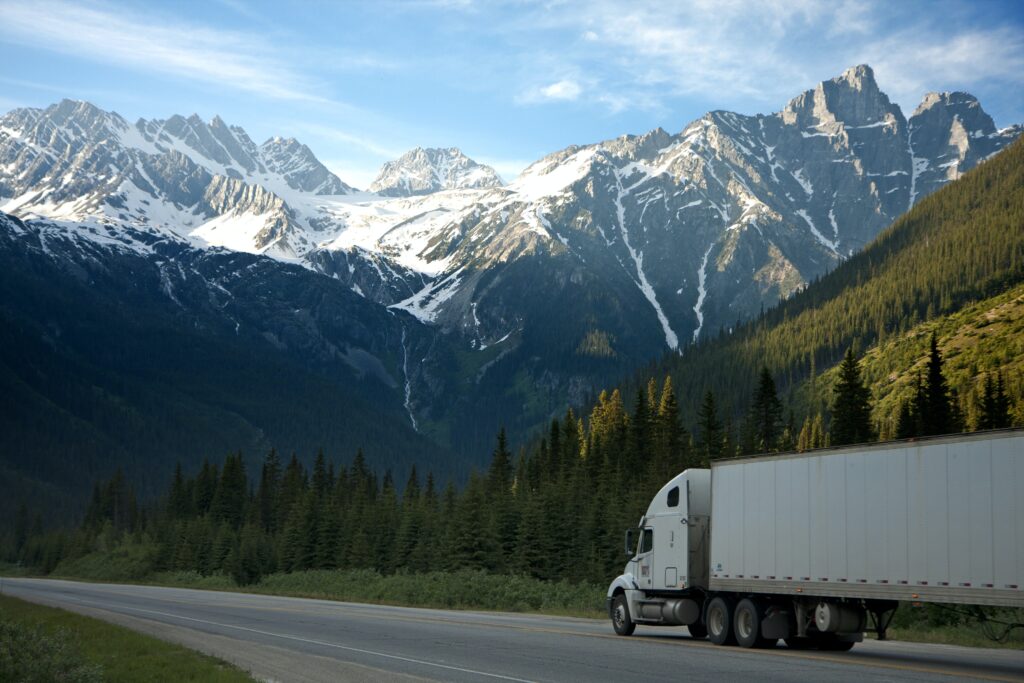
Truck driving in British Columbia is different from other provinces primarily due to the terrain. Major highways are characterized by sharp turns, steep grades of slopes, and vulnerabilities due to the natural environment, including but not limited to rock slides, avalanches, wildlife, forest fires, and flooding.
There are a range of restrictions and permit requirements for driving through BC, with specific rules applied to certain routes due to the landscape, environmental risks, and other infrastructures such as tunnels and bridges. While there are precise requirements for permits, which can be reviewed here, there are also some minimum guidelines that we can highlight. When you ship with Trusted Dispatch, you can have peace of mind that our BC drivers know the routes and are experts when it comes to obtaining the appropriate permits.
There are different dimensions that indicate an oversized load, depending on the type of vehicle. For example, a pick-up truck will have a size restriction that is smaller than a semi-truck. The following dimensions are for semi-trucks with trailers.
Overall height: 4.15m or 13′ 6″
Overall length: 23m or 75′
Overall width: 2.6m or 8′ 6″
All oversized loads are required to use red flag markers on all four corners of the load. Drivers are also required to have flashing or rotating lights on the roof of the cab and on the extremities for nighttime driving.
When Are Pilot Cars Necessary?
Once a load is deemed to be oversized, the requirements for using a pilot car, trail car, and scout car depend on the route travelled. A highway pass with several blind hills or sharp turns will often require the presence of a scout car. The purpose of the scout card is to drive ahead to monitor road conditions and give advanced warning to oncoming traffic that a wide load is approaching.
What Are the Rules for Oversize Heavy Haul Loads in Alberta
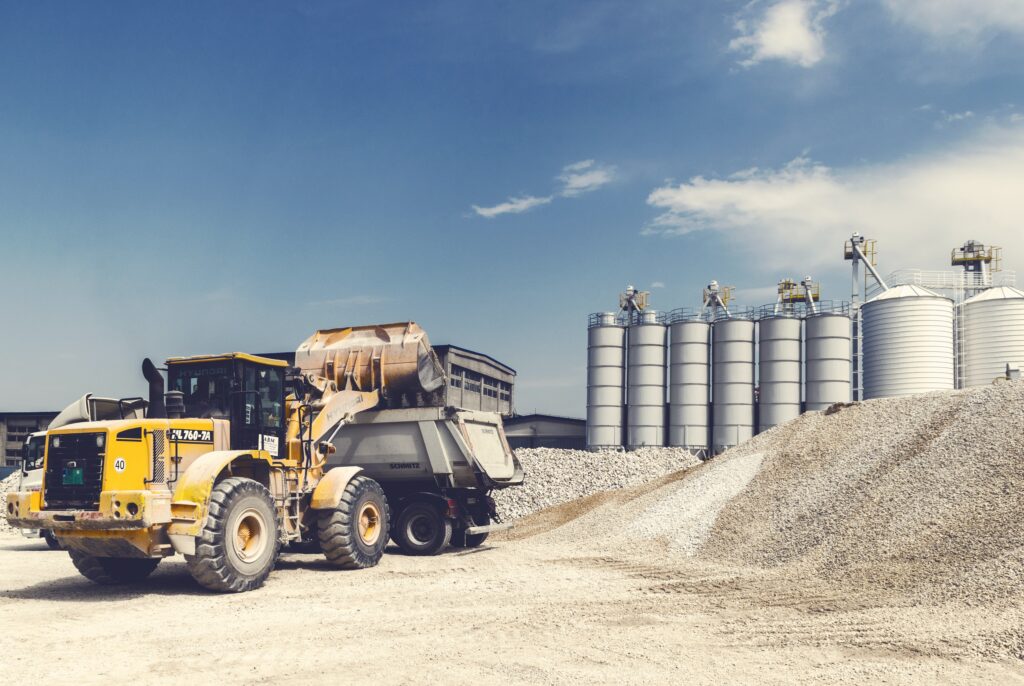
The dimensions for oversized loads in Alberta are similar to British Columbia. The main difference between the provinces in terms of permitting and rules is around the required signage.
Overall height: 4.15m or 13′ 6″
Overall length: 23m or 75′ to 27.5m or 90′
Overall width: 2.6m or 8’6″
In Alberta, once a vehicle is considered to be hauling an oversized load, it is mandatory to use flags on the widest parts of the load. When the shipment reaches 3.05m wide (10′), then oversize load signage is required at both the front of the truck and the rear of the trailer to indicate to traffic the presence of the oversize load.
When Are Pilot Cars Necessary?
The use of escort cars in Alberta is less frequent than in BC, primarily due to the terrain and the presence of multi-lane highways. In Alberta, a load that is between 3.85m (12′ 7″) and 5.5m (18′) wide must be accompanied by a trail car.
Loads that are over 5.5m (18′) wide must be accompanied by both a pilot and trail vehicle. There are also restrictions on when these oversize loads can be on the roads. Wide loads are prohibited on highways between 3 pm and midnight on a Friday, the day before a stat holiday, or on a Sunday. These are times when traffic is heaviest due to travellers and therefore unsuitable for large shipments to be travelling and holding up the public.
What Are the Rules for Oversize Heavy Haul Loads in Saskatchewan
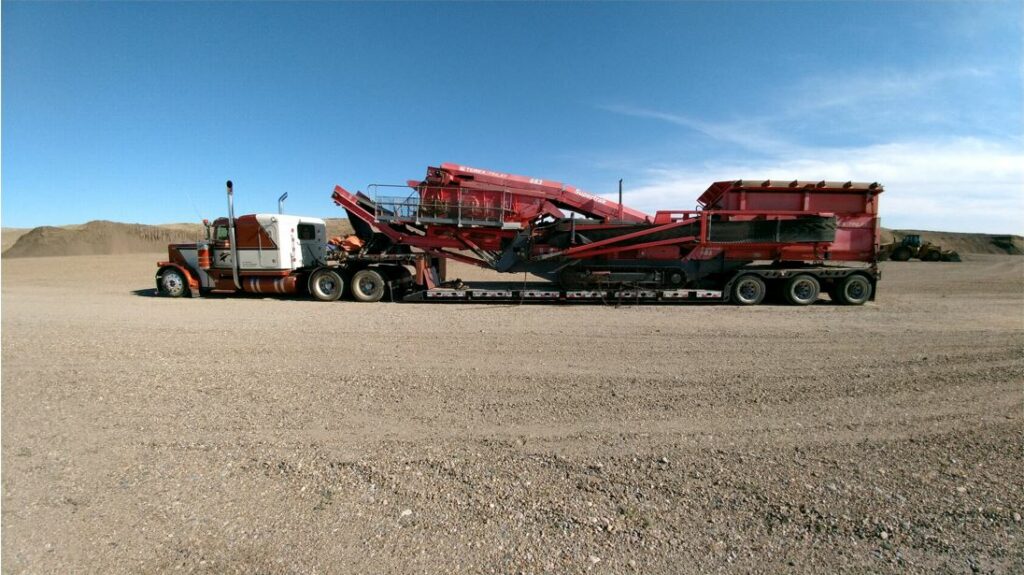
The dimension limits that indicate a load is oversized in Saskatchewan are the same as in Alberta and BC for height and width. However, the maximum length of a load is greater.
Overall height: 4.15m or 13′ 6″
Overall length: 26m or 85′ to 27.5m or 90′
Overall width: 2.6m or 8′ 6″
When Are Pilot Cars Necessary?
In Saskatchewan, there are specific guidelines for when a pilot car or a trail car or both are required. The rules depend on whether the load is transported on a 2-lane highway or a 4-lane highway and whether the transport is happening during the day or at night. If your shipment is crossing Saskatchewan, the drivers at Trusted Dispatch will know what permits are required and what restrictions are present.
What Are the Rules for Oversize Heavy Haul Loads in Manitoba
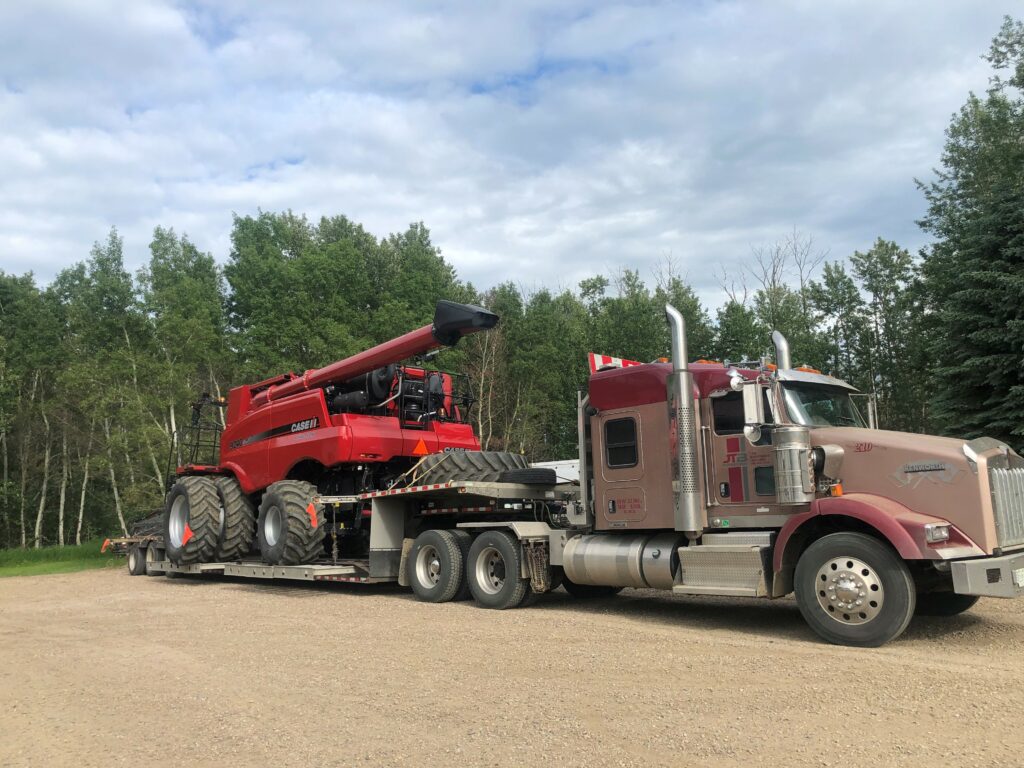
Manitoba follows the same dimension limits for height and width as the rest of Western Canada. The length limit in Manitoba varies, similar to the other three provinces, depending on the truck and trailer combination.
Overall height: 4.15m or 13′ 6″
Overall length: 12m or 40′ to 20m or 65′
Overall width: 2.6m or 8′ 6″
When Are Pilot Cars Necessary?
The government of Manitoba clearly states all the cases when pilot cars, flashing lights, and red flags are required on oversized vehicles. This includes driving restrictions for certain highways and within city centres. The longer, taller, or wider a load is, the more restrictions applied to such shipments’ movement.
For example, once a load is more than 2.6m wide, red flags must be attached to the four corners of the load, and a red or amber light must be used at night. There are also restrictions for travelling through Winnipeg during peak traffic times. Once a load is over 3m wide, the truck must display a “D” or “Wide Load” sign on the front and back of the truck and trailer to alert surrounding traffic. The full list of rules can be viewed on the Manitoba government website.
Overall Guidelines for Hauling Oversized Loads
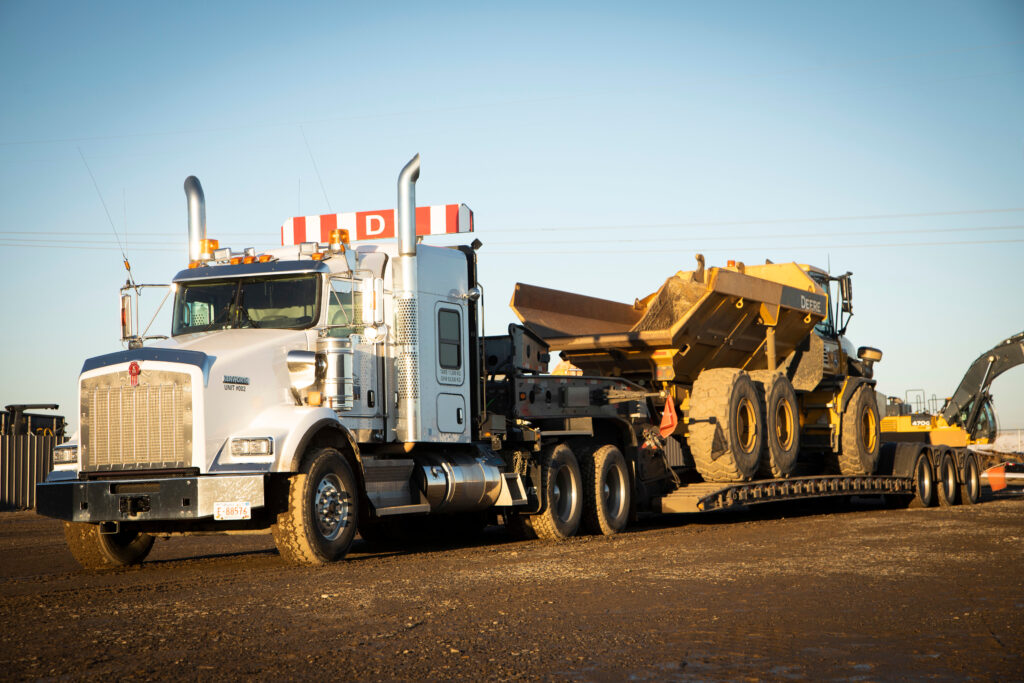
Across Western Canada, the guidelines for an oversized load are standardized for height and width limits. Where the provinces differ is the requirements for when to use escort and pilot cards. Drivers need to be informed and perform due diligence when planning hauls that cross borders both in Canada and the United States. The drivers at Trusted Dispatch are experienced professionals that take care of all those details for your shipment.
Exemptions for Farm Equipment
With all the guidelines we’ve mentioned, there are a few exemptions from the requirements. In the three prairie provinces of Alberta, Saskatchewan, and Manitoba, there are some exemptions to the rules and regulations for farming equipment. When drivers are transporting machinery that is only used for agriculture purposes, there is generally an exemption from width restrictions. The height limitations remain due to powerlines, and length and weight restrictions are upheld for safety and logistical reasons. However, combine harvesters and seeders are not required to completely dismantle unless they reach a width that would completely block traffic. Each province has guidelines that must be researched before transport.
In the three prairie provinces of Alberta, Saskatchewan, and Manitoba, there are some exemptions to the rules and regulations for farming equipment.
Canadian Heavy Haul Trucking Companies
When choosing a Canadian heavy haul trucking company to deliver your heavy equipment, you want to select one that knows and follows the rules and regulations of each jurisdiction and is committed to safety. At Trusted Dispatch, our drivers are experienced professionals who put safety first and follow our strict standards of service to ensure your load is delivered in original condition, safely, and on time. Check out our drivers’ page to see our drivers in action and get started with your instant, free shipping quote here.

